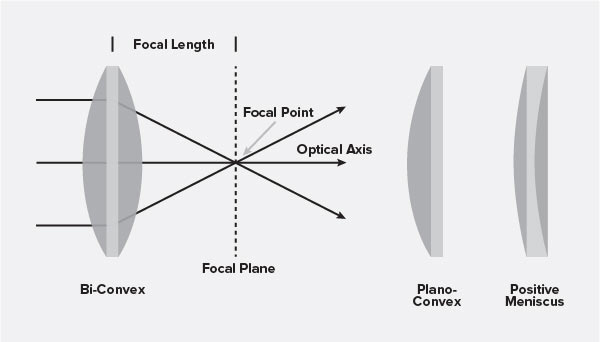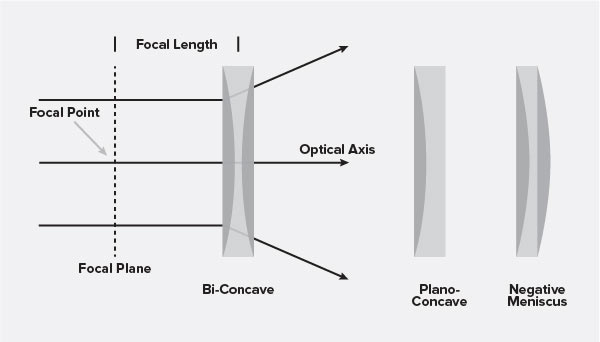Spherical Lens
Apr. 02, 2022
Spherical lenses have at least one surface with a constant radius of curvature. There are two types of spherical lenses: convex (converging) lenses and concave (diverging) lenses.

Converging (Positive) Lenses

Diverging (Negative) Lenses
Customized production process
The manufacturing process for spherical lenses begins with a quote created by a manufacturing engineer. The manufacturing engineer then designs and orders a near-net shape optical glass blank. Once we receive the material, the optical glass blanks are shipped to the production line. Once we have processed the order, the first step is to generate radii in the glass blank using a diamond ring tool. The lens blanks are then finely ground using a series of diamond grinding wheels with progressively smaller grit sizes or loose abrasive material. Finally, the polishing process uses asphalt or polyurethane pads and cerium oxide slurry to finish the spherical lens surface. The finished spherical lenses are then either shipped to the customer or retained in the facility for further processing through processes such as custom coating and truncation.
At CLZ Optics, our large inventory of conventional and CNC production equipment gives you the freedom to manufacture your lens designs in the most efficient and cost-effective manner.
Precision Centering
Custom truncation
Off-Axis Spherical Lenses
Coatings
We have a wide range of in-house coating capabilities to meet your requirements.
| Uses for Optical Lenses | ||
| Surgical loupes | Microscopy | Multi-spectral imaging |
| Telescopes | LASIK devices | Machine vision |
| Ophthalmology | Threat detection | Laser target designators |





















